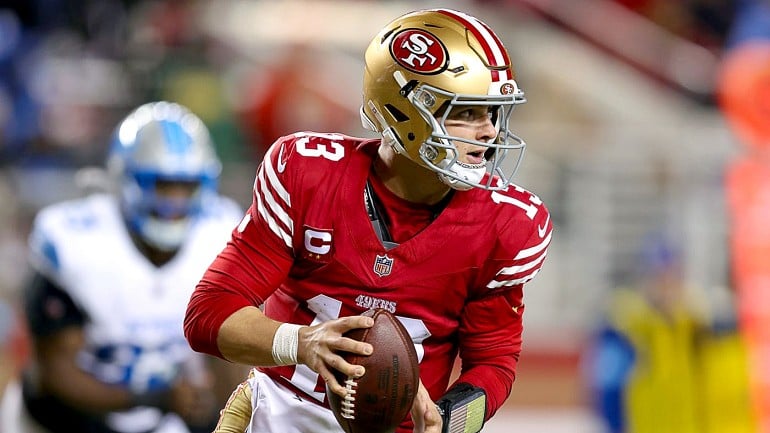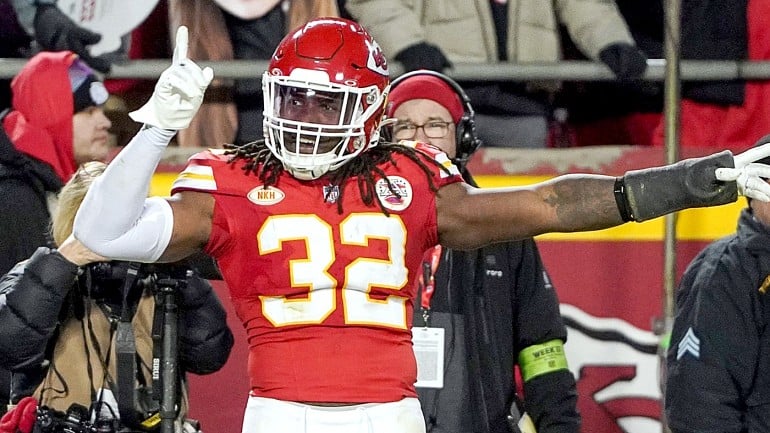Last year at 49er training camp, San Francisco General Manager Scot McCloughan told me the 2008 San Francisco 49ers would be employing a hybrid 3-4 and 4-3 defense.
Well scratch that idea now.
Hall of Fame Chicago Bear linebacker and San Francisco 49ers' head coach "Samurai" Mike Singletary wants an actual identity. Physical with an "F," I believe.
In order for this to be achieved, defensive coordinator Greg Manusky must stress 3-4 defense fundamentals and be creative with his defensive play calling to overcome the 49ers' lack of a playmaking free safety and solid pass rush.
The 2009 San Francisco 49ers' defensive personnel fit a 3-4 scheme and they should not deviate from this course.
The roster lacks two very large and athletic defensive tackles like a young Bryant Young or Dana Stubblefield and two somewhat large and very athletic defensive ends such as a Dwight Freeney or Osi Umenyiora to run a 4-3 defense.
These types of players are not salary cap friendly, extremely hard to find and it seems like there's only one or two outstanding defensive line prospects in each draft.
Differing from the 4-3, the 3-4 defensive lineman is used as a space eater allowing the more athletic linebackers opportunities to get to the football.
Defensive ends in the 3-4 tend to be close to the 300-pound mark like the New England Patriots' Richard Seymour or Trevor Pryce while nose tackles can weigh an excess of 310 pounds such as Shaun Rogers. The linebackers in the 3-4 scheme are expected to make the big plays.
The 3-4 inside linebacker must be strong in run support because there are only three defensive linemen matched up against five offensive lineman, so it is essential that they stack and shed the efforts of an unblocked lineman in the running game.
A 3-4 defense also employs two outside linebackers in a two point stance who appear to be rushing the quarterback.
This creates a disadvantage for the offensive linemen to correctly determine their blocking assignments before the snap, hindering the offense's execution. There will always be confusion regarding which linebacker(s) is rushing the quarterback at any given time.
These defenders are often called "tweeners," as they are in between the normal size of defensive ends and linebackers. Players like John Abraham are capable of playing both 4-3 defensive end and 3-4 outside linebacker.
The "elephant" position, used by the George Seifert's 49er defenses, was a hybrid position using a player that could both play linebacker and defensive end.
Former 49er Charles Haley was the first to be utilized in this fashion and Manny Lawson or Parys Haralson should be capable of doing the same for the 2009 49ers.
The 3-4 does have a glaring weakness. Three defensive linemen cannot reliably collapse the five offensive linemen pocket on the quarterback, so it becomes a struggle to constantly put pressure on the quarterback unless the three linemen are freakishly talented.
Traditionally, the 3-4 has struggled against the pass but the zone blitz was created by Pittsburgh Steelers' defensive coordinator Dick LeBeau as a solution to this problem.
In a normal blitz package, you have five or six defenders rushing the passer. The remaining linebackers and defensive backs often play man coverage which can leave a pass over the top a definitive possibility against the secondary.
Wide receivers in the NFL tend to be taller than defensive backs (Detroit Lion Calvin Johnson comes to mind) and win the one on one battles a majority of the time.
For the zone blitz to work, the athletic linebackers must drop back and cover an assigned zone. Since there are four linebackers, the opposing quarterback does not know which one of the four will be rushing him. Whichever linebacker rushes, the other three shift to fill in the zones.
Sometimes the defense will rush two linebackers on the same side, leaving two defensive tackles and two linebackers attacking three offensive linemen. The two remaining linebackers can quickly shift over to fill in the gaps left by the two who are blitzing.
A 4-3 defense seems best suited to stop the modern day pass happy NFL teams while the 3-4 defense is better geared to stop run based offenses.
The key to success with the 49er defensive unit is mixing up pass rushers and utilizing zone coverages like the zone blitz and Cover 2. This will confuse the quarterback and force the receivers to play a far more physical game than they are accustomed to.
In Cover 2, the key players in the secondary are the safeties because they have to cover lots of ground. The safeties are responsible for all vertical routes and have to keep all offensive players in front of them at all times.
The linebackers and corners cover the short routes, so the safeties are the last line of defense.
The corners cover the flats and their main responsibility is to bump the receiver inside and not let him get to the outside, which would make it much harder for a safety to reach the receiver if he goes vertical.
The corners usually cover the hook, curl and out route while the linebackers cover the hook and curl routes in their respective zones, as well as slant and crossing routes.
If the San Francisco 49ers were to ever run any plays from the "Tampa 2" playbook with any success, a top end safety like Bob Sanders would have to be acquired in the near future to complement shut down cornerback Nate Clements, hard hitting strong safety Michael Lewis and solid veteran Dre Bly.
A Cover 2 scheme is great to use against teams that don't have too many speed demons and rely on short to medium routes, such as a team that runs the West Coast Offense. However, every Achilles has his heel.
An effective way to beat Cover 2 is by having two receivers stacked on one side in a pro set formation and have them run a "10 Smash."
The outside receiver runs a hook or curl to draw the cornerback to his position while the inside receiver runs a corner route right behind the other receiver. The safeties may not have enough time to defend the pass if timed correctly and thrown with pinpoint accuracy.
Each player has a specific area of the field they are responsible for. If they make a mistake in coverage, the entire game plan is jeopardized because it creates a hole in the zone.
This is broken coverage and the 49er secondary would probably fall victim to this because they simply do not have the personnel to run Cover 2 coverage consistently.
In order for this defense to succeed in 2009, they must be strong in bump and run man to man coverage allowing the assigned linebackers free run at the quarterback to keep up with the more established passing attacks in the NFL. It is imperative the three front linemen beat double teams and collapse the pocket inwards.
Will this defense be physical with an "F?" Current personnel dictate this 49er unit will be fast and extremely aggressive.
Apparently that is what the "F" means.



